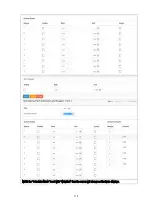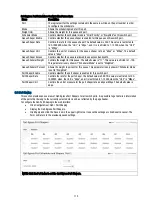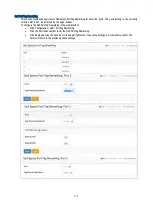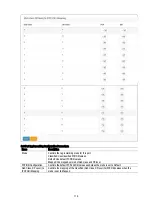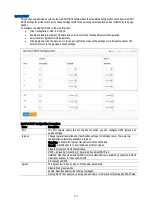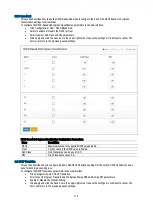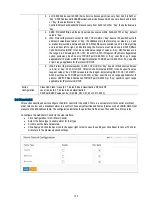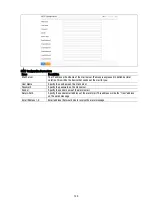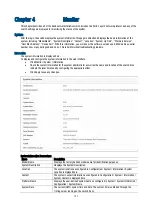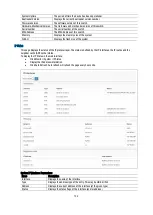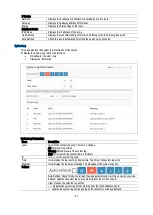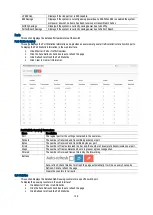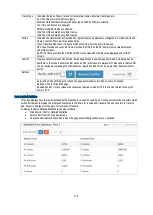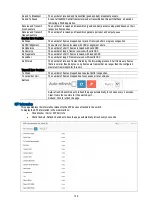
125
Mirror Configuration Parameters:
Items
Description
Port to mirror to
Port to mirror also known as the mirror port. Frames from ports that have either source (Rx)
or destination (Tx) mirroring enabled are mirrored on this port. Disabled disables mirroring.
Port
The logical port for the settings contained in the same row.
Mode
Select Mirror mode.
Rx, only frames received on this port ware mirrored on the mirror port. Frames transmitted
are not mirrored.
Tx, only frames transmitted on this port are mirrored on the mirror port. Frames transmitted
are not mirrored.
Enabled, frames received and frames transmitted are mirrored on the mirror port.
NOTE: For a given port, a frame is only transmitted once. It is therefore not possible to mirror Tx frames on the mirror port.
Because of this, mode for the selected mirror port is limited to Disabled or Rx only.
Universal Plug and Play (UPnP)
UPnP is an acronym for Universal Plug and Play. The goals of UPnP are to allow devices to connect seamlessly and to
simplify the implementation of networks in the home (data sharing, communications, and entertainment) and in corporate
environments for simplified installation of computer components.
To configure the UPnP in the web interface:
Click Configuration / UPnP
Scroll to select the mode to enable or disable.
Specify the parameters in the TTL and Advertising Duration fields.
Click Apply and click the Save icon in the upper right corner to save the settings or click Reset to cancel. The
Form will return to the previously saved settings.
UPnP Configuration Parameters:
Items
Description
Mode
Indicates the UPnP operation mode. Possible modes are:
Enabled: Enable UPnP mode operation.
Disabled: Disable UPnP mode operation.
When the mode is enabled, two ACEs are added automatically to trap UPnP related packets
to the CPU. The ACEs are automatically removed when the mode is disabled.
TTL
The TTL value is used by UPnP to send SSDP advertisement messages. Valid values are in
the range of 1 to 255.
Advertising Duration
The duration, carried in SSDP packets, is used to inform a control point or control points
how often it or they should receive an SSDP advertisement message from this switch. If a
control point does not receive any message within the duration, it will think that the switch
no longer exists. Due to the unreliable nature of UDP, in the standard it is recommended
that such refreshing of advertisements to be done at less than one-half of the advertising
duration. In the implementation, the switch sends SSDP messages periodically at the
interval one-half of the advertising duration minus 30 seconds. Valid values are in the range
100 to 86400.


